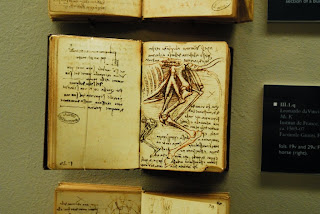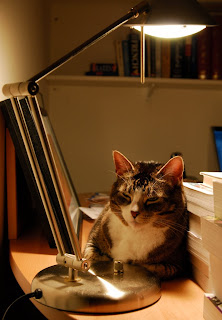
The day I received "Annie Leibovitz at Work", I also received "Outliers" from Amazon. I browsed through the Leibovitz book quickly and left it on my bookshelf; then I started reading "Outliers" immediately. Why? Because it's the new book by Malcolm Gladwell.
Gladwell is the author of only 3 books, but his first two books, "The Tipping Point", and "Blink" were international phenomena. (Personally I think "The Tipping Point" is great, but "Blink" just ride on its predecessor's waves.) Not only they sold like a non-fiction "The Da Vinci Code", they were studied by marketing departments and business schools world wide. A new Malcolm Gladwell book is something you pay attention to.
I had almost finished the book (only the last chapter left). How do I rank it with his two other books? I'd say it's much better than "Blink". Though it's not as refreshing as "The Tipping Point", it will be more influential.
OK, no more details of the book. I don't intend to write a book review. This is just a book impression. (Like my roommate TF used to say, you should not read a book review before you read the book.) I only want to focus on my two observations. One, Gladwell's rhetoric style; two, the most important idea in this book to me (p 267), "success is a gift".
1. Gladwell's Rhetoric StyleAfter the huge success of "The Tipping Point", there are tons of non-fiction books published, following the "Gladwell" formula. That is, they take a hard-to-explain and counter-intuitive fact (but has to be interesting enough), and explain it through statistic, economics, or psychology theory. Well, some of them were interesting and managed to make the best seller list, but most of them were very boring. So when I got Gladwell's new book this time, I started to pay attention to his style. Conclusion? Malcolm Gladwell is a good rhetoric and he knows how to get your attention.
He usually uses the following 2 strategies:
Strategy 1
- present a fact and a popularly accepted cause that seems to explain it very convincingly, but with a few unexplained details
- tell you he's going to argue that it's not so (by then the suspense is really high)
- present a very counter-intuitive argument,
- use his argument to re-explain the fact more convincingly, suddenly it makes better sense
- you feel you are looking at the same thing with different eyes
Strategy 2
- tell you a crisis, or something that seems unbelievable, and tell you it can be solved/explained by what he's going to tell you (How? you are definitely paying attention now)
- provide his long-shot explanation, then explain step-by-step how the long shot is done
(He used strategy 1 in part I and strategy 2 in part II. Strategy 2 is not always successful. Sometimes the case history is so long you just want to skip it. )
It's something I can definitely learn from.
2. Success is a gift (and you do need a lot of help)When I reach page 267, I have read through a lot of case histories the author presents and cannot but reflect on my own experience. (Just like the author will do in the next chapter.) I don't think I am successful or even an outlier like those exceptional cases the author presents, but I am not coming this far without any help either. Some are from my parents (for sure), some were from a government which provided easy access to education and very low tuition fees for higher education (sadly, not any more for the later). It is indeed a gift. And if we accept the idea that success is a gift, we also acknowledge the power we have as a society to give. If so, with the power we know we have, what more can we do?
I think if there's only one idea I can take away from this book, it will be this one.




 Thanks to my friend Catherine, I got a discount to the Leonardo da Vinci exhibition and visited the Tech Museum today.
Thanks to my friend Catherine, I got a discount to the Leonardo da Vinci exhibition and visited the Tech Museum today. This is a replica of the famous Florence Duomo, designed by another Renaissance genius, Filippo Brunelleschi. The dome is double layered so you can climb from the in-between stairs to the top.
This is a replica of the famous Florence Duomo, designed by another Renaissance genius, Filippo Brunelleschi. The dome is double layered so you can climb from the in-between stairs to the top. The master by himself. Though born in Florence, da Vinci spent a lot of his life in Milan. Unlike his fellow Florentine Dante and Michelangelo, he was buried in France, not Italy, the prodigal son never returned.
The master by himself. Though born in Florence, da Vinci spent a lot of his life in Milan. Unlike his fellow Florentine Dante and Michelangelo, he was buried in France, not Italy, the prodigal son never returned.


 Each fall, millions of Monarch butterflies migrate south from Canada and north U.S.. Most of them stay in Mexico, some stay in California. Year by year, thousands of butterflies come to the same trees and those famous "butterfly trees" can be found in Santa Cruz, Pacific Grove, and Santa Barbara. (The nearest one is in the Natural Bridge State Park in Santa Cruz.)
Each fall, millions of Monarch butterflies migrate south from Canada and north U.S.. Most of them stay in Mexico, some stay in California. Year by year, thousands of butterflies come to the same trees and those famous "butterfly trees" can be found in Santa Cruz, Pacific Grove, and Santa Barbara. (The nearest one is in the Natural Bridge State Park in Santa Cruz.)

 Cats love warmth and know where to find it. The old CRT monitors were their favorite. Poor Miti just has to make do with a normal lamp.
Cats love warmth and know where to find it. The old CRT monitors were their favorite. Poor Miti just has to make do with a normal lamp.

 After my trip to Irvine, I have to admit I start to enjoy shooting portraits. Since it's more hassle to hire a model, I decide to follow Rembrandt's good examples to do some self portraits. It's a bit challenging because I don't have any studio lighting equipments so the shooting has to solely rely on natural light. Fortunately the light from the window is pretty good (soft and even due to the clouded weather). The big mirror in my living room also makes posing easier (though it's still hard to focus). Now the only thing I have to be careful about is to minimize the clutter in my house entering the pictures.
After my trip to Irvine, I have to admit I start to enjoy shooting portraits. Since it's more hassle to hire a model, I decide to follow Rembrandt's good examples to do some self portraits. It's a bit challenging because I don't have any studio lighting equipments so the shooting has to solely rely on natural light. Fortunately the light from the window is pretty good (soft and even due to the clouded weather). The big mirror in my living room also makes posing easier (though it's still hard to focus). Now the only thing I have to be careful about is to minimize the clutter in my house entering the pictures. Today we headed toward the beach for the photos of the newlyweds. The weather is nice, the light bright but soft, perfect for outdoor portraits. The newlyweds are in cheerful mood and I have a lot of fun shooting their photos.
Today we headed toward the beach for the photos of the newlyweds. The weather is nice, the light bright but soft, perfect for outdoor portraits. The newlyweds are in cheerful mood and I have a lot of fun shooting their photos.




